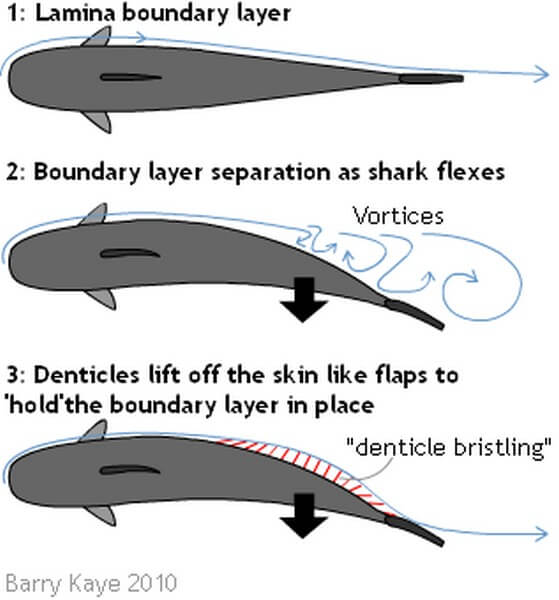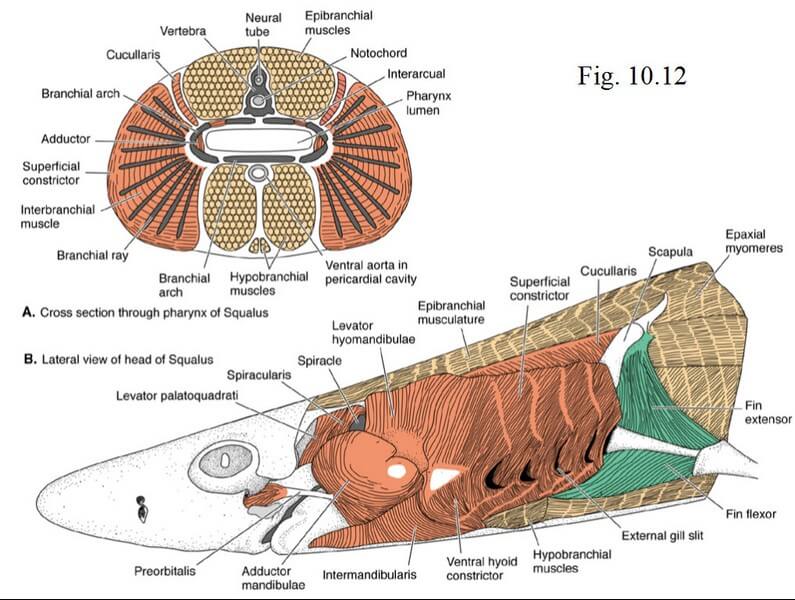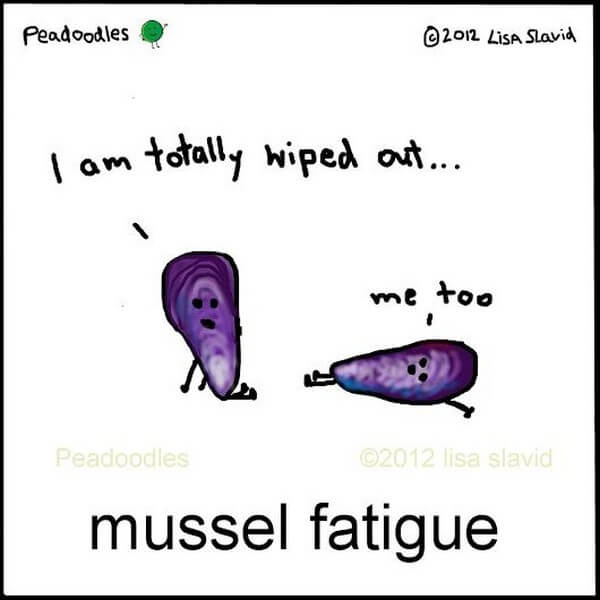Did you know sharks can fly?
Okay, not really… but the microscopic grooves, or riblets, in shark’s skin inspired the construction of an aeroplane. Did you also know there is a material created that is similar to shark skin to prevent algae settling on the hull of ships? And engineers are attempting to integrate it into hospital coatings on surfaces to reduce infections and bacterial growth.
A Great White tends to attack from beneath and behind therefore it needs to be fast and stealthy to catch prey. So let’s delve into Mother Nature’s design into an apex water-based predator.
A Great White shark is shaped liked a torpedo – a fusiform body. It is cylindrical in shape with narrowing edges such as the tail and keels, called caudal fins, on the side of the tail which is crescent moon shape. The purpose of this shape of the shark is to minimize the effort when swimming.
Sharks have built in cruise control.
A shark has two types of muscles to ensure movement: the red muscle and white muscle. The red muscle is used for “cruise control” or slow-muscle action and the white muscle is used for fast sudden bursts of speed.
Sharks are characterised as “stiff bodies” as they use as little energy as possible to move. A Great White arches his body slightly sideways to create a curve or rhythmic sine wave that enables it to move forward. A perfect example of this is a snake in water and the ripples its body makes to propel forward.

Great White Sharks use their heads to move.
Due to the very little muscle usage, the shark uses its head to also move. The back and forth motion of the head creates high and low pressure areas in the rest of the body. For example, the tail allows the shark to glide easily through the water because of the low pressure used to” flick” the tail for extra motion.

Other areas like the fins allow the shark a better ability to guide and lift itself. The pectoral fins are stiff fins that allow a downward movement, guidance and lift, to counteract the caudal fins which propel the shark downwards and upwards.
Okay, so we’ve discussed the muscles and fins of the shark but still we don’t understand how they are able to move so effortlessly…
The secret lies in the scales – or small denticles rather. Sharks do not have scales like fish instead they have a tough and abrasive skin like sandpaper that is made up of a substance similar to teeth. The denticles are made up of layers of dentine and a surface of enamel. These dermal denticles that lie inside little channels, called riblets, inside the shark’s skin reduces drag and friction in movement. It channels the water smoothly along the shark’s body without creating waves meaning there is less effort used for the shark to push against the water.
Another way in which sharks like Great Whites and Makos (the fastest shark) are able to move so quickly is because they are endothermic. This means they can regulate their own body temperature according to the water temperature, they then are able to contract their muscles to increase their speed.
Wow! That sounds like a lot of “mussel” fatigue to me…

By Kylie Samuels





